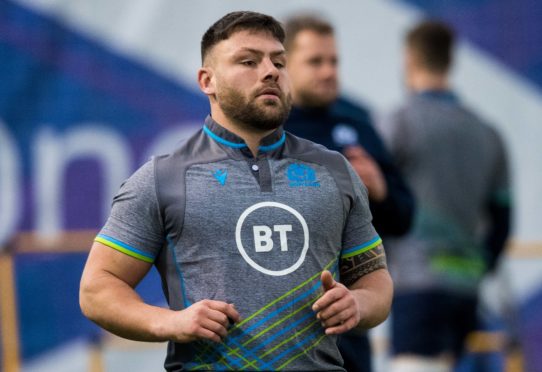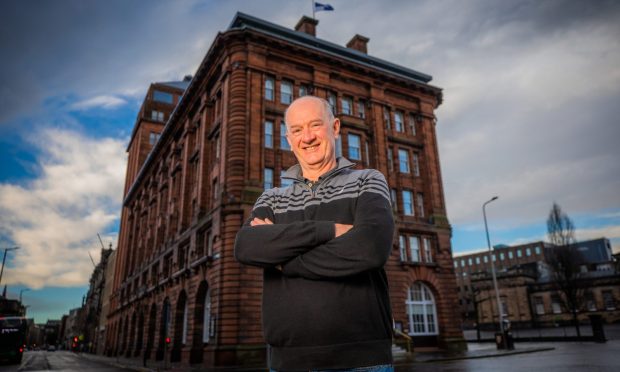Rory Sutherland’s path to one of Scottish Rugby’s most famous shirts should be an incentive for anyone with any talent playing rugby anywhere in Scotland.
Mind you, they’d have to go through a torturous path to build up the levels of karma due to the man who was a surprising but hugely welcome force in his comeback test against Ireland on Saturday. Now he looks to hold on to the fabled No 1 shirt – previously filled by legends Dave Rollo, Iain McLaughlan, Jim Aitken, David Sole and Tom Smith among others – for some time to come.
It wasn’t so much eyebrows raised as creased when the 27-year-old was selected for the Dublin game – his last cap had been four years ago, and he’d played only a handful of games for Edinburgh this year.
Sutherland himself wasn’t exactly flush with confidence himself before taking on the Irish, with British Lion Tadhg Furlong in direct opposition.
“I’m not going to lie, I was a little bit worried that I wasn’t going to be able to keep up with the pace of the game,” he said. “I’d played three or four games for Edinburgh, including against Bordeaux and Wasps, and thought I’d done well in them, but it was a surprise to get called up, much less make the team.
“A few carries in the first few minutes helped, although my body’s not agreeing with that now! Also to get a penalty in the first scrum settled me, and I’m really happy with the way I went on Saturday.”
Sutherland was central to Scotland having the edge in the scrum, despite what has been a nightmare four years since his last international appearances, in Japan in the tour of summer 2016.
“At the start of the 2016-17 season, I’d played about five games, and I was warming up and went into a sprint and one of the tendons in my groin snapped,” he explained.
“There was so much strain on it from sprinting that the other adductor came off the bone as well. I had a bilateral groin reconstruction, getting the adductors reattached and screwed into the bone again. I was flat on my back for three months.”
This came after Sutherland had come up through a long route without ever seeing one of Scottish Rugby’s academies and with just limited age-group appearances.
He left school at 15, completing his apprenticeship in electrical engineering, and worked for a year. Coming from Hawick, he played for the club, but had six months out of the game when he and his fiancée had a baby and had to start from scratch with Gala – which meant virtual excommunication from Hawick, of course.
Former Scotland prop George Graham took him under his wing at Gala and vowed to take his game further, and after a bit Edinburgh came in for him.
“It was a huge decision to make at the time, turning pro,” he said. “Obviously, I had a secure job, and a young family, so to leave that and take a chance…with hindsight, it was well worth it.”
But after fulfilling his dream of playing for Scotland, the severity of the injury, the gruelling rehab to get back to fitness and even the timing lowered him all the way back almost to square one.
“I would never have given up trying to get back to playing rugby,” he said. “But it was a long process. I went through three months of pretty much not being able to move at all, then a period of rehab teaching my body the mechanics of walking and running again, and then another slow transition to playing.
“It was very hard to wake up every day and keep that drive to want to play again. And then there was the change of coaches at Edinburgh and when I came back I don’t think I was ready to play, and I think that was Cockers’ (Edinburgh coach Richard Cockerill) perception of me.
“I had to gone back down and play for (Edinburgh) Accies and Hawick again, just to build up match fitness. Cockers gave me a chance again – he’s open to talking whenever you need to talk to him, although sometimes it’s not the most pleasant of conversations.
“But he’s a good coach and fair man who will let you know if you’re not playing well or if if he likes what you’re doing, so you always know where you stand.”
Saturday will be Sutherland’s first international at Murrayfield, and his first game against England at any level.
“It’ll mean a lot to me, just being back and getting to play in that blue jersey again means a lot to me,” he said.
“When I was going through those tough times, imagining being where I am now helped to get me through – having those positive thoughts of ‘well, it can happen again if I put the work in’ and take it day by day, game by game.”

